Starting your career as a plumber has provided you with a whole host of skills that have helped you to improve your relationships with clients and provide outstanding service. Throughout your training and during real life experience, you have come to realize that there are a handful of good practices that every plumber should know Read more
Whats New

Starting your career as a plumber has provided you with a whole host of skills that have helped you to improve your relationships with clients and provide outstanding service. Throughout your training and during real life experience, you have come to realize that there are a handful of good practices that every plumber should know about. These simple, but effective practices not only help you to improve professional relationships with clients, but it will also enhance your business reputation too. Whether you’re making sure you clean up properly at the end of a job, or you’re providing an honest and transparent overview of the tasks at hand, you will find that these practices will give you a great advantage when it comes to growing your business. Hopefully, you can start to incorporate these ideas into the way you work on a daily basis so that you are always putting your best foot forward when you’re carrying out jobs for clients in your ideal demographic.
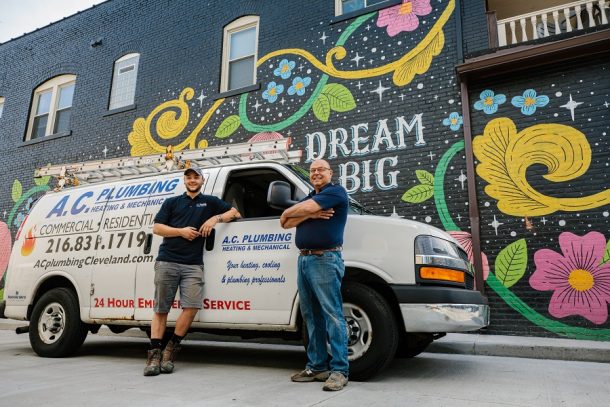
Friendliness
Having a friendly tradesman on your side is a very reassuring thing for a customer to experience. When someone has an issue with the plumbing in their home it can be very worrying and anxiety inducing, because they won’t know how easily the problem can be fixed. If you are able to put their mind at ease using a friendly tone and manner, they will feel much happier and comfortable whilst you carry out the job.
Cleaning Up After a Job
A clean and tidy plumber is a well-respected one, so it’s always a good idea to take the relevant tools along to each job with you. As well as fixing pipes, leaks and other plumbing issues, you also need to show that you respect peoples’ homes, so a thorough clean-up is a must every single time. You may want to invest in a portable dust collector to help you remove harmful particles that build up whilst you’re carrying out your job. Removing excess dust will not only help to keep the area safe, but it will also ensure that your customer is happy with the overall job too. Although you don’t necessarily have to clean up the are until it’s spotless, you should try and leave it in the state you left it so that you haven’t caused any unnecessary mess.
Good Communication
From the moment you come into contact with your potential clients and customers, you need to make sure you provide good communication. Most plumbing issues are fairly urgent, which can be very unsettling to homeowners and business owners looking to get the job done as fast as possible. If you’re able to communicate effectively and efficiently with your customers, you will create a strong working relationship from the very beginning. It is very reassuring when tradespeople communicate well via phone calls, emails and text messages as it gives your business a good name and professional vibe from the outset. As soon as you start prioritizing communication, you will start to see an increase in customer referrals as they will feel extremely happy with the service they experienced with you.
Professionalism When Working
Every plumber has their own way of working, depending on your style. No matter how familiar you are with a client, you should always respect their home and carry out work in a professional manner. Try to avoid talking on the phone, using social media or listening to loud music whilst you’re working on the task at hand. Provide regular updates to your client when needed and show respect for their home and surroundings.
Sticking to Deadlines
Try not to make promises to your clients if you know it’s going to be difficult to deliver on these promises. Sticking to deadlines is extremely important as this shows that you can be trusted as a plumber. If you are able to provide clear updates when you’re carrying out a job it will put your client’s mind at ease right away. Don’t feel worried about telling them about a delay due ordering a new part. Communication goes a long way when it comes to getting the job done and your customer will be much happier if you can keep them in the loop with deadlines as and when they may change.
Honesty and Transparency
As a business owner, it’s so important to practice honesty and transparency no matter what stage in business you are at. Whether you’re first starting out or you’ve been in the industry for decades, you need to show honesty throughout every task you undertake. This could mean being open about pricing from the moment someone requests a quote from you. Lying to your customers or playing down an issue could lead to bigger complications and it will break the trust between you and your client.
Putting Safety First
When you’re working as a plumber, it is so important to take safety seriously and prioritize it as often as possible. Keeping pets and children in the household away from your workspace is a must, so that there are no unforeseen accidents in the area. You should also take measures to protect yourself whilst working too so that you are always safe and following protocols whilst in other peoples’ homes and establishments.
As you can see, there are a whole host of different best practices to help you move your business forward and create a positive brand name for your business. Whether you’re working for an agency as a plumber, or you’re representing your own company, you should always be willing to go the extra mile and make sure your customers receive the best possible service from you. From safety procedures to cleaning guidelines, you can always go above and beyond to provide an excellent service for your clients. Hopefully, you are already familiar with most of the ideas set out ahead of you, but with a little extra care and attention you can do an even better job when it comes to providing outstanding plumbing services every single time.
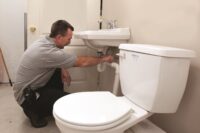
Due to its hot summers and cool winters, planning your kitchen or bathroom renovation in Australia is key to making your home comfortable. Good plumbing is at the heart of this, affecting water use and how cosy your home feels all year round. To help you maintain your Australian home no matter the weather, here Read more
Due to its hot summers and cool winters, planning your kitchen or bathroom renovation in Australia is key to making your home comfortable. Good plumbing is at the heart of this, affecting water use and how cosy your home feels all year round.
To help you maintain your Australian home no matter the weather, here are some plumbing tips that will make your spaces practical and durable, saving you time and money in the long run.
Understand Your Plumbing Layout
Before making any renovations, you should understand your plumbing layout first. This means figuring out where all your pipes and fixtures are located. A handy tip is to look at your house plans for guidance. You could also seek assistance from a professional plumbing service near you.
For example, if you live in Perth or nearby areas, Alpha Sealed WA is just one of many other trusted repair specialists in Australia you can rely on. These professionals can easily map out your system, clarifying the best ways to proceed with upgrades or repairs.
Having the right knowledge ensures that your renovation efforts are both effective and efficient, avoiding unnecessary complications.
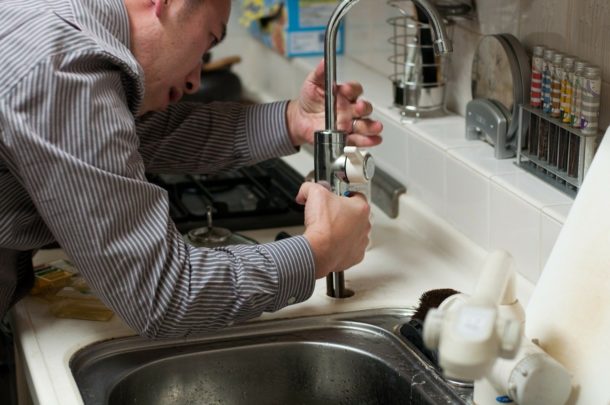
Budgeting for Plumbing
Plumbing improvements can be expensive. So, to prevent any financial surprises, it’s advisable to familiarise yourself with these expenses early in the planning process. Begin by itemising your project’s tasks, from simple fixture replacements to extensive pipe overhauls. Early on, solicit detailed quotes from several reputable plumbers to compare costs and services.
Anticipating unexpected expenses is also an essential part of effective budgeting. Therefore, reserve a portion of your budget for issues that may arise during the renovation process. This proactive approach helps mitigate stress and prevents project delays, ensuring you maintain control over your finances.
Additionally, investing in quality materials and skilled labour upfront can save money in the long term by reducing the need for frequent repairs or replacements. Remember, a well-budgeted project is a smoothly executed project, leading to lasting satisfaction and functionality in your home’s plumbing system.
Choosing the Right Materials
Investing in high-quality plumbing materials reduces maintenance and replacement costs over time. Look for durable, efficient options that can withstand Australia’s variable climate. Materials like stainless steel for pipes and fittings are known for their longevity and resistance to corrosion.
Stainless steel is an outstanding choice due to its durability and resistance to corrosion. Besides stainless steel, copper is also known for its long-lasting qualities. Meanwhile, PEX piping is considered for its flexibility and resistance to breaking under cold conditions.
These materials ensure your renovation project remains both reliable and aesthetically pleasing over time, avoiding the frequent updates that lesser quality materials might necessitate.
Incorporating Eco-Friendly Solutions
Choosing eco-friendly plumbing fixtures is a smart move, as these fixtures can help you save water and reduce your bills. For bathrooms, low-flow showerheads, dual-flush toilets, and water-saving faucets can significantly lower your water usage, benefiting your wallet and the environment.
Meanwhile, tap aerators and efficient dishwashers greatly affect kitchen water use. These choices benefit the planet and make your home more sustainable and cost-effective in the long run.
Avoiding Common Mistakes
Making mistakes during plumbing renovations is easy, but avoiding them can save you time and money. One common error is not getting the proper permits for major plumbing work, which can lead to issues with local regulations. Another mistake is overlooking the need for updated fixtures to match new plumbing layouts, leading to mismatches that can affect both function and design.
These oversights not only increase costs but can also delay your renovation project. Always double-check requirements and compatibility to ensure your renovation goes smoothly and doesn’t face unnecessary hurdles.
Professional Inspection
It is essential to have a professional inspect your plumbing before finishing the job. An inspector ensures everything is up to code, checking for leaks, proper installation, and overall functionality.
This step can catch potential problems early, preventing costly repairs down the line. For homeowners, this means peace of mind knowing their plumbing is safe, efficient, and correctly installed. It’s a protective measure that safeguards against future issues, ensuring the longevity and reliability of your renovation project.
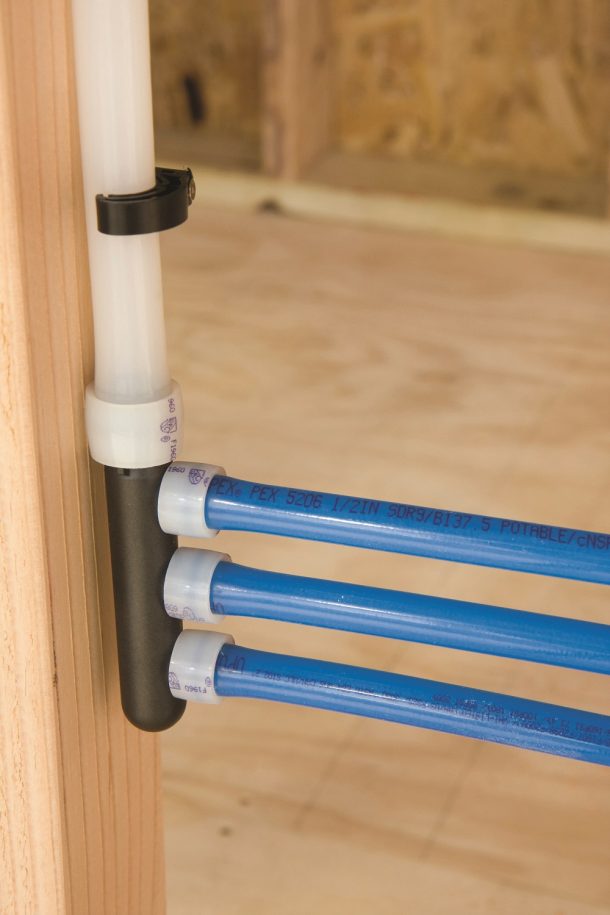
Make Maintenance Easier
Some specific design choices can significantly reduce upkeep efforts, ensuring your bathroom and kitchen remain functional.
For example, you can install access panels for hidden utilities, such as plumbing valves or electrical boxes. So, when repairs are needed, you can easily reach what needs fixing without the hassle of cutting into walls.
Opting for fixtures with modular components also allows for straightforward part replacement. If a piece breaks, you can swap it out without dismantling the entire fixture, saving time and cost.
Additionally, compared to a prefabricated unit, a tiled shower base also offers simpler repair and cleaning opportunities, especially with a removable tile insert at the drain, avoiding extensive demolition for simple issues.
Lastly, you can opt for smart leak detectors, which provide an early warning system for water leaks. These devices prevent potential water damage and facilitate prompt repairs.
Planning for Upgrades
Design your plumbing with future upgrades in mind. Opt for modular components that can be easily adjusted or expanded. Anticipate advancements in technology and potential lifestyle changes. This could mean preparing spaces for smart home water systems or additional fixtures.
Such foresight adds value to your home, ensuring it remains adaptable and up-to-date. This also facilitates the integration of new technologies to accommodate evolving household needs.
Wrapping Up
The right plumbing choices allow homeowners to create spaces that are beautiful, efficient, sustainable, and ready to grow with them. Considering these essential tips, renovators can ensure their projects meet current needs and adapt to their lifestyles. Whether you’re a fan of DIY projects or planning to bring in professionals, these expert suggestions will help you have a successful renovation project that stands the test of time.
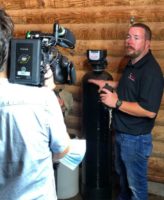
As a plumber, the chances are that you are used to working alone or within a small team. However, it is important to keep in mind that most clients will address plumping works and renovations as part of a larger, more extensive project. As such, they are likely to look for trusted traders and ask Read more
As a plumber, the chances are that you are used to working alone or within a small team. However, it is important to keep in mind that most clients will address plumping works and renovations as part of a larger, more extensive project. As such, they are likely to look for trusted traders and ask for recommendations and referrals.
So, if you are looking to develop your plumbing business and bring more projects and work to your company, partnering with other contractors and networking with specialists in the field is key! Here is all you need to know.
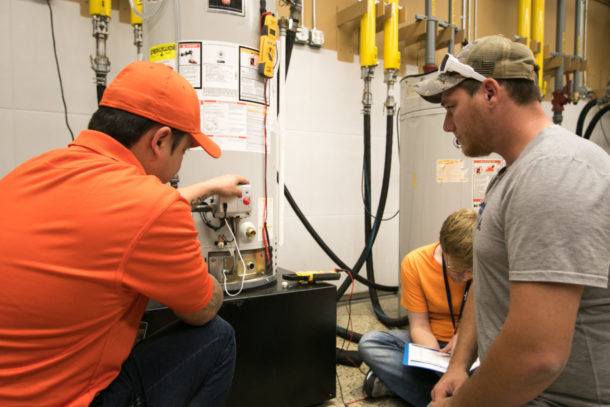
Minimize The Risk of Errors
When it comes to replacing the plumbing system in a typical home, homeowners can spend between $3,000 and $16,000 – which, alone, is a considerable investment! But there’s more to that! Indeed, most homeowners will tackle plumbing projects as part of a home makeover that often involves renovating the bathrooms or kitchen. These projects can not only be costly, but come with a high risk of errors and mistakes!
By working with the other contractors involved in the project, you and your plumbing team can minimize the risk of costly mistakes and remediations.
Enhance Communication Throughout The Project
By working with the other contractors involved in the project, you can boost communication and ensure that the client’s expectations are effortlessly met. For example, if a client is looking to update a house for accessibility and aging in place, you may take care of making the bathroom, bathtubs, or shower more accessible, while also working with safety experts to install alarms, rails, and other safety features.
Build A Network of Contacts
The majority of homeowners and clients looking to tackle a renovation will look for a contractor they can trust. To do so, they are likely to:
- Ask for referrals and personal recommendations from trusted family members and friends
- Speak to contractors they can trust to check whether they know a specialized plumber, electrician, or trader
- Check online professional directories
- Look for contractors with an excellent online reputation and great reviews
- Ask at the local hardware store
Having a network to rely on can make your business more easily discoverable by clients looking for your services.
Leverage Shared Tools
As a single contractor, the chances are that you may not have all the tools and equipment needed for highly complex projects. In turn, you may often find yourself purchasing or renting costly gear, which can take a toll on your cash flow. That’s where working with other contractors and sharing the tools and equipment available – including a bulk bag filler, a soldering station, or a drain camera system – can help to save money and boost your business.
Exchange Expertise
Although each contractor involved in the project will have the skills needed to complete their tasks, it is important not to underestimate the benefits of sharing experiences and capabilities. These could be from past projects, recent innovations, or training courses. Be sure to interact and communicate with the other professionals involved in each project to enhance your skill set and capabilities – and, ultimately, keep your business relevant!

Are you running a plumbing business? If so, then it’s important to be aware of some of the key challenges that you are likely to encounter with your company in the year ahead and the best ways to handle them in the future. Set Up Costs First, you need to make sure that you are Read more
Are you running a plumbing business? If so, then it’s important to be aware of some of the key challenges that you are likely to encounter with your company in the year ahead and the best ways to handle them in the future.

Set Up Costs
First, you need to make sure that you are aware of the setup costs that are going to impact your business in the future. There are plenty of set up costs that are likely to shape your company and will put pressure on your business financially. You just need to find ways to reduce these as much as possible. One of the best ways to do this would be by hiring a professional accountant. Then be able to keep track of your spends and ensure that you don’t end up in a situation where your company is essentially bleeding money.
Cost Increases
Due to the cost of living crisis and inflation, it is likely that you are going to struggle with heavier costs for your plumbing business. There’s no easy way around this and it’s important to make sure that you are handling the situation the right way. For instance, if you are hunting for suppliers for your business, then you need to make sure that you are choosing companies that will fit within your respective budget. This could be true when looking for a bearing manufacturer or any similar supplier that your business is likely to depend on.
Reviews
Next, you should make sure that you are focusing on getting the right reviews for your business. If you don’t get the right reviews, then you are always going to struggle to grow your company in the long term. There are lots of reasons why you might be struggling to get positive reviews in your company. For instance, it’s possible that your level of service isn’t at the point that customers need or demand. The trick is handling reviews for your business in the right way. Don’t fall into the trap of ignoring negative reviews that are going to end up damaging your business.
Skill Shortage
Finally, you may need to navigate issues with a skills shortage. Industrial companies are struggling to get people who have the right skills and experience on team. To handle this, we recommend that you do think about exploring who is going to help your business come out on top in the long run. There are lots of ways to get the right team for your company. However, the most important factor is to ensure that you are completing a wide and thorough search for the right people in your business model.
We hope this helps you understand some of the key steps that you should take to ensure that your business is going to come out on top when facing these challenges in the future. If you take the right steps you can make sure that your company is always prepared for future challenges and ready to tackle oncoming storms with ease.

The importance of using high grade concrete for any type of construction project should never be underestimated whether you’re working in residential or commercial industries. Not only does it provide a better overall finishing product, but it also ensures everything is carried out with the best intentions and highest standards in mind. If you’re in Read more
The importance of using high grade concrete for any type of construction project should never be underestimated whether you’re working in residential or commercial industries. Not only does it provide a better overall finishing product, but it also ensures everything is carried out with the best intentions and highest standards in mind. If you’re in the field of construction, here are five reasons to always choose top quality concrete.
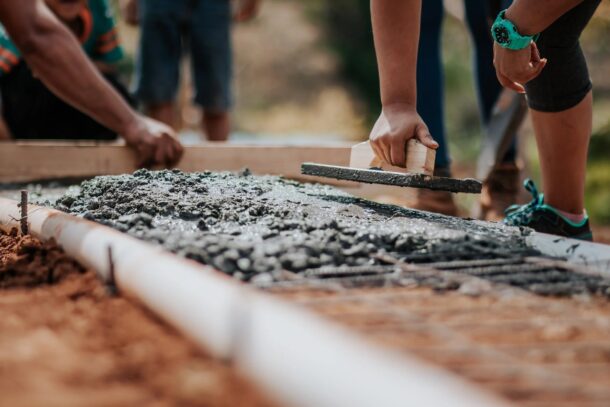
- It’s Easy to Maintain and Repair
One thing about concrete is that it should be very solid and long-lasting as long as it’s high grade. With that being said, should you ever need to carry out maintenance or repairs, it’s also much easier to do so when the concrete is top quality. When it comes to repairing commercial concrete, you want to cause as little disruption as possible to everything around it. Complete tear outs and halts to business as usual simply isn’t an option in many commercial scenarios. Quick and efficient repair and maintenance is a fundamental part of keeping many different public spaces running smoothly every day.
- It Has More Strength and Durability
There is no doubt that high quality concrete is known for its incredible strength and durability. It’s not only able to withstand daily usage, but it can also hold its own under extreme weather conditions too. Only when concrete is made of high quality materials can it stand the test of time and stay strong throughout all types of environments.
- It’s More Eco-Friendly
Whether you’re working in commercial property or construction, you will constantly be looking for a way to be as eco-friendly as possible in every project you undertake. Even if you’re carefully tracking your business expenses and costing, high quality concrete is affordable and is made from natural materials and poses less threat to the plant because it reduces waste over time.
- It Has Higher Levels of Versatility
You can do much more with high quality concrete and it looks more pleasing to the eye too. Although concrete is practical in nature, there are also circumstances where certain finishes and colors are desirable, so there is plenty of scope to do that when using the right type of concrete.
- It’s Extremely Cost Effective
It is always important to find the most cost effective solutions when running any type of business, especially if you’re working in construction. The cost of materials is increasing rapidly, so investing in high quality goods will save you a tonne of money on replacements in the future.
To Conclude
It’s clear to see that high quality concrete will always come out on top when it comes to commercial projects. Although it may appear to be a large expense at the time, it’s the best investment you can make for your customers and overall reputation. Not only is it essential for the durability and standard of the final result, but it is also a cost-saving technique in the long run. Hopefully, these reasons are enough to urge you to seek out top grade concrete if you should ever require it for upcoming commercial projects.
